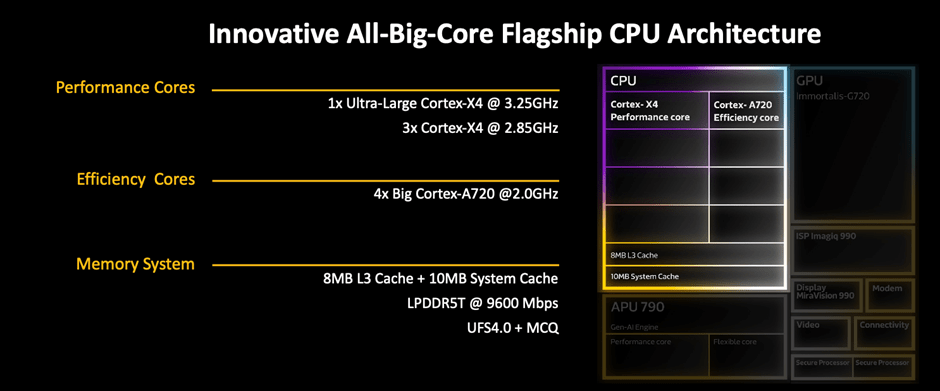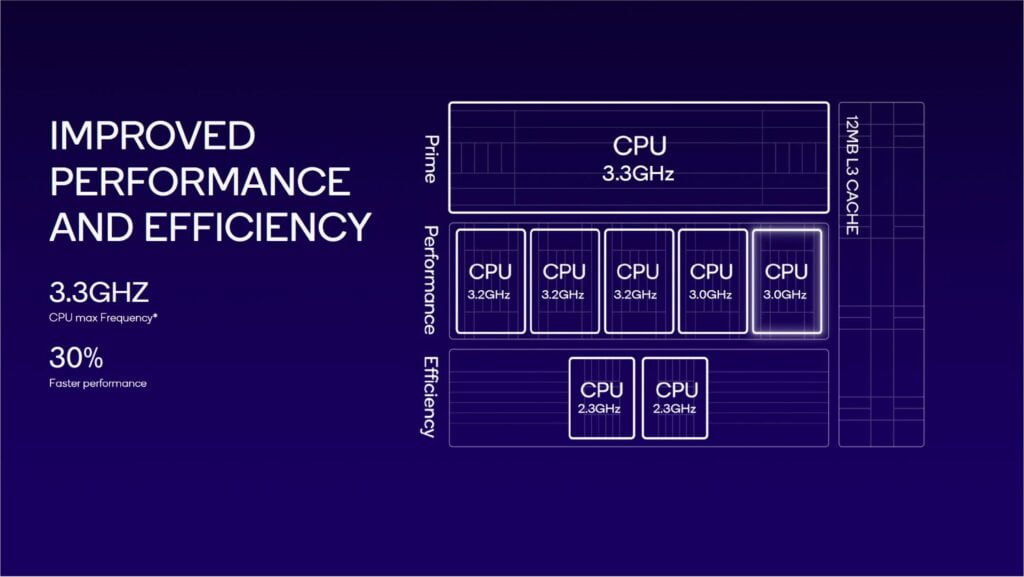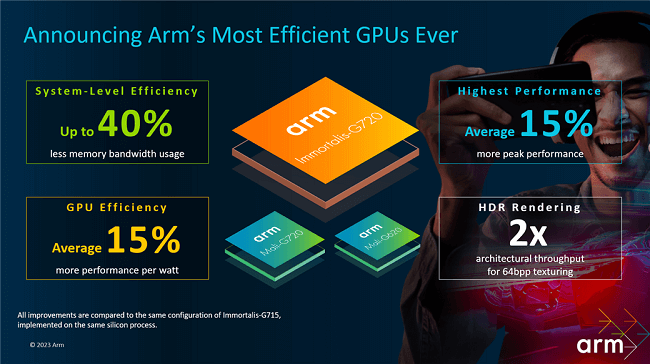MediaTek’s latest chipset launch is the Dimensity 9300, a radically new and powerful chip from the company. With this one, MediaTek is directly taking the fight to Qualcomm and its dominance in the flagship chipset market. So, let’s take a closer look at the Dimensity 9300 and see how it matches up to Qualcomm’s Snapdragon 8 Gen 3 chipset in this Snapdragon 8 Gen 3 vs Dimensity 9300 battle!
Snapdragon 8 Gen 3 vs Dimensity 9300: Performance

The MediaTek Dimensity 9300’s great claim to fame this time around is the “all BIG cores” statement that MediaTek has been parading everywhere. What this essentially means is that the chipset consists of four Cortex-X4 cores, one clocked at 3.25 GHz, while the others are kept at 2.85 GHz. Four more Cortex-A720 cores, each clocked at 2 GHz, operate in the system.
With this, the MediaTek Dimensity 9300 manages to have nothing but high-performance cores. Yes, the Cortex A720 architecture isn’t necessarily as fast as the Cortex-X4, but the performance levels here are excellent.

Compare this with the Snapdragon 8 Gen 3’s cluster of cores. First, we have one high-performance Cortex-X4 core, at 3.3 GHz. Then, we have five Cortex-A720 cores, three of them running at 3.2 GHz, and the other two at 3 GHz. Finally, there are two Cortex A520 cores clocked at 2.3 GHz. In this case, the Cortex A520 cores are the little cores.
Because of this setup, the MediaTek Dimensity 9300 should have better multi-core performance, but similar single-core performance. There are some concerns surrounding the chipset’s power efficiency, as the little cores are meant to keep performance efficient for simpler tasks. MediaTek however claims that having all cores tuned for power allows the chipset to accomplish tasks faster, allowing it to achieve similar levels of efficiency.
Of course, real-world performance remains to be seen, but on paper, the Dimensity 9300 has the performance advantage. Most single-core tasks will run smoothly just like on the Snapdragon 8 Gen 3, but the major difference is in multi-core performance. Thanks to the powerful 4+4 setup, tasks like video rendering and multi-tasking will be faster on the MediaTek solution.
While the numbers on paper are higher for the MediaTek Dimensity 9300, how about benchmark performance? Well, all benchmarks tested on the chipsets so far put the Dimensity 9300 far above its Snapdragon counterpart. It’s a big win for MediaTek, truly taking the lead from Qualcomm for once.
Snapdragon 8 Gen 3 vs Dimensity 9300: Generative AI

Generative AI is the hot topic around modern flagship chipsets, and both MediaTek and Qualcomm are bringing their best this time around. For the MediaTek 9300, we have a brand new APU 790, which brings double the integer and floating point capability. It also brings a boost in power efficiency with a 45% reduction in power consumption from last year’s Dimensity 9200 chipset.
On top of this, the on-device generative AI capabilities have seen a boost on the Dimensity 9300. According to MediaTek, the APU 790 can run a 7 billion parameter LLM at 20 tokens per second. To get around its power consumption and memory footprint, the APU 790 supports INT4 (A16W4). This allows it to run smaller quantized models, as well as feature a dedicated hardware memory decompression block.
The Dimensity 9300 can extend this to run a 13 billion LLM within 16GB of RAM, with up to 33 billion parameters with 24GB RAM. Of course, it’s a tad slower at 3-4 tokens per second processing rate, but it’s still an impressive showing. Being able to run full-on generative AI on your phone, even with a compressed memory model, is incredibly impressive stuff.

These numbers are big, though Qualcomm matches these blow for blow. The Snapdragon 8 Gen 3 runs 10 billion parameters on-device with LLM models running to up to 20 tokens per second by default. These are higher numbers than the basic Dimensity chipset, and Qualcomm’s Hexagon NPU works well for it. The chipset also supports Meta’s Llama 2 and Microsoft’s Stable Diffusion, which is great.
Qualcomm doesn’t publish as much technical information on their generative AI details. What we do know is that ultimately, both devices will feature fairly impressive generative AI performance. Both also feature SDK-level support so smartphone manufacturers make use of these features on their devices. You can’t go wrong with either option here.
Snapdragon 8 Gen 3 vs Dimensity 9300: GPU

The MediaTek Dimensity 9300 comes with a new 12-core ARM Immortalis-G720 GPU. Thanks to the new improvements, MediaTek boasts a 23% peak performance improvement over the 9200 and up to a 46% ray tracing uplift. Efficiency has also seen a large boost, with a 46% reduction in power consumption. There’s support for WQHD displays of up to 180Hz, and 4K displays at 120Hz.

Over in the Qualcomm stable, The Snapdragon 8 Gen 3 brings support for 240Hz refresh rates and 8K resolutions, albeit only when outputting to an external screen. Otherwise, the refresh rate maxes out at 144Hz at QHD+ resolutions or 4K/60Hz. The new Adreno GPU is 25% faster in performance and 25% more power efficient than previous iterations as well. Outside of this, Qualcomm has also improved the hardware-based ray tracing by 40% and added support for Unreal Engine 5 Lumen.
Snapdragon 8 Gen 3 vs Dimensity 9300: Photography
For photography, MediaTek’s Imagiq 990 ISP returns to its starring role. With 16 object layers of segmentation, always-on HDR capture at 4K, and a dual-lossless zoom hardware engine, there’s plenty here to like. There’s even a dedicated OIS sensor core in the ISP, allowing it to be standalone without sharing resources with other sensors.
Qualcomm is also bringing their A-game in this regard. With a new cognitive ISP with 12 object layer separation, video object erasers via AI, and new technology for HDR video capture, Qualcomm is hoping to present a breakthrough in mobile photography with the Snapdragon 8 Gen 3. We don’t think it’s going to reach that level, but the sheer degree of tech going into this chipset is astounding.
Snapdragon 8 Gen 3 vs Dimensity 9300: Connectivity
MediaTek hasn’t made much of a deal out of the Dimensity 9300’s connectivity options. This doesn’t mean they’re slacking, however. Looking through the chipset’s connectivity capabilities, you’ll find integrated support for Wi-Fi 7 and 5G sub-6GHz bands at up to 7Gbps download speeds. All of this is respectable, as one would expect from a flagship chipset.
Qualcomm has also made great strides, though things are much flashier on this end. 5G is now the standard with the Snapdragon X75 Modem-RF System, with hardware-based AI acceleration. For Wi-Fi, we’ve got the Qualcomm FastConnect 7800 Wi-Fi 7 platform that Qualcomm claims will provide faster speeds and lower latency via High Band Simultaneous Multi-Link.
Snapdragon 8 Gen 3 vs Dimensity 9300: FAQ
In terms of specifications, the Dimensity 9300 matches the Snapdragon 8 Gen 3. A lot of any smartphone’s performance will come down to the device’s optimization and cooling. We find the Dimensity 9300 to be better, precisely because it’s going to be slightly more affordable with many of the same features.
As of right now, the Vivo X100 and its variants, the iQOO Neo 9 Pro, the Oppo Find X7 5G, and the Tecno Phantom V2 Fold are all the devices running the MediaTek Dimensity 9300 chipset.
The MediaTek Dimensity 9300 SoC was announced on November 6th, 2023 as the Chinese tech giant’s latest and greatest foray into the flagship mobile chipset market.
Read more about:




I loved you even more than you’ll say here. The picture is nice and your writing is stylish, but you read it quickly. I think you should give it another chance soon. I’ll likely do that again and again if you keep this walk safe.